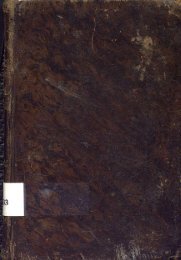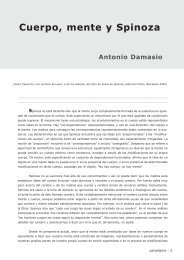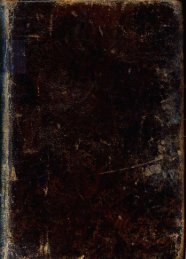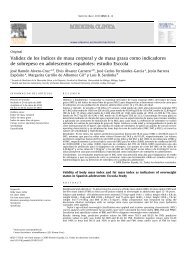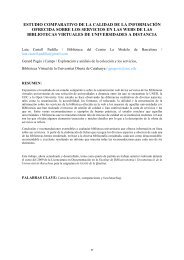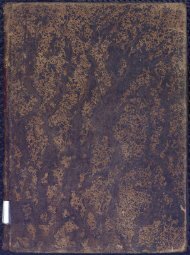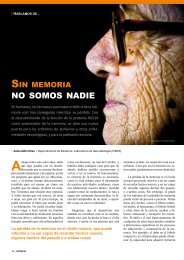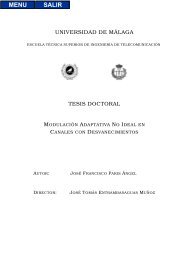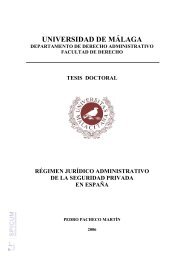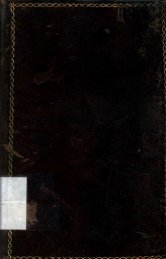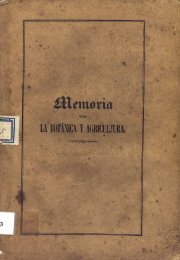Papel de las actividades superóxido dismutasa y catalasa en la ...
Papel de las actividades superóxido dismutasa y catalasa en la ...
Papel de las actividades superóxido dismutasa y catalasa en la ...
You also want an ePaper? Increase the reach of your titles
YUMPU automatically turns print PDFs into web optimized ePapers that Google loves.
RESULTS AND DISCUSSION<br />
Once immunostimu<strong>la</strong>nt effect of algal cells was <strong>de</strong>monstrated, the pot<strong>en</strong>tial effect<br />
of the extracellu<strong>la</strong>r polysaccharidic fraction of P. cru<strong>en</strong>tum on the respiratory burst<br />
activity of sole phagocytes was evaluated (article 2.2., Article section).<br />
Results obtained indicate that in vitro none of the assayed conc<strong>en</strong>trations of the<br />
extracellu<strong>la</strong>r polysacchari<strong>de</strong> from P. cru<strong>en</strong>tum stimu<strong>la</strong>te the respiratory burst of sole<br />
phagocytes, after 30 min contact with fish cells. These results are not in agreem<strong>en</strong>t with<br />
the data obtained by Castro et al. (2004, 2006), who suggest that stimu<strong>la</strong>tion of<br />
respiratory burst activity in turbot (Psetta maxima) phagocytes incubated with algal<br />
extracts, is due to algal polysacchari<strong>de</strong>s. On the other hand, according to Castro et al.<br />
(2004) the modu<strong>la</strong>tory ability of the respiratory burst activity of fish phagocytes varies<br />
greatly among algal species. Therefore, the non stimu<strong>la</strong>tion of respiratory burst in vitro<br />
by P. cru<strong>en</strong>tum polysacchari<strong>de</strong>s could be due to the abs<strong>en</strong>ce of immunostimu<strong>la</strong>nt<br />
activity in this fraction, pres<strong>en</strong>ce in low conc<strong>en</strong>tration or short incubation time with<br />
phagocytes. Whereas, the positive control, a commercial β-glucan, induced an increase<br />
in the respiratory burst, activity wh<strong>en</strong> applied at 10 mg ml -1 .<br />
Additionally, fish were intraperitoneally inocu<strong>la</strong>ted with 500 µg of extracellu<strong>la</strong>r<br />
polysaccharidic fraction. Later, fish were immunized with a bacterin, composed by P.<br />
damse<strong>la</strong>e subsp. piscicida formol-inactivated cells. Sampling time was carried out at 24<br />
h and sev<strong>en</strong> days post-vaccination. Results obtained indicate that the conc<strong>en</strong>tration and<br />
time assayed, 1 and 7 days after polysaccharidic fraction inocu<strong>la</strong>tion, do not produce an<br />
increase in the respiratory burst activity of sole phagocytes, not ev<strong>en</strong> immunized fish.<br />
Moreover, 24 h post-inocu<strong>la</strong>tion, the respiratory burst <strong>de</strong>creases in phagocytes from fish<br />
inocu<strong>la</strong>ted with polysaccharidic fraction or with the bacterin. This <strong>de</strong>crease may be due<br />
to an immunosupression by stress after handling (Thompson et al., 1993; Pulsford et al.,<br />
1995) as it is not observed after 7 days of the inocu<strong>la</strong>tion.<br />
To sum up, the polysaccharidic fraction of P. cru<strong>en</strong>tum, in assayed conditions,<br />
does not <strong>en</strong>hance the respiratory burst activity in sole phagocytes. These results suggest<br />
that stimu<strong>la</strong>tion observed after oral administration of alga cells would be due to other<br />
compounds with immunostimu<strong>la</strong>nt properties. However, we cannot rule out the<br />
possibility that the polysacchari<strong>de</strong> stimu<strong>la</strong>te another immunological parameter. Thus, a<br />
103



